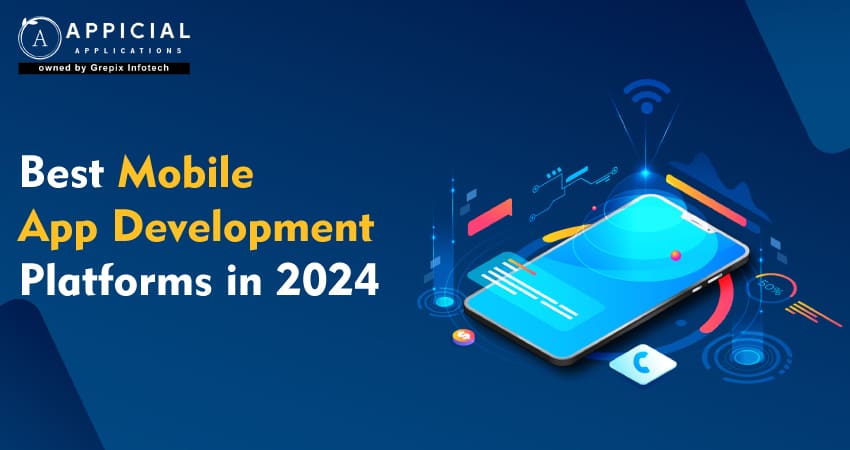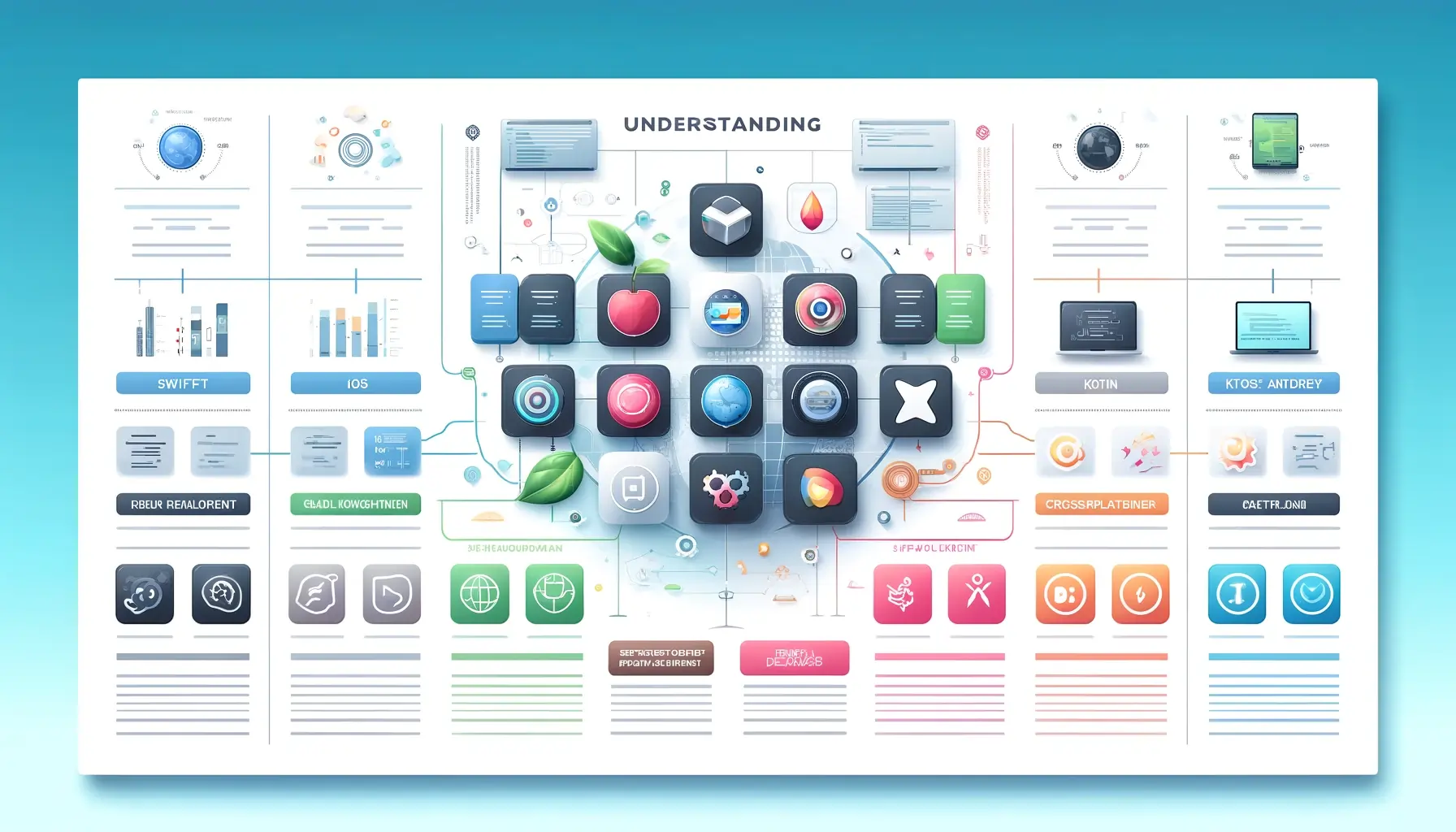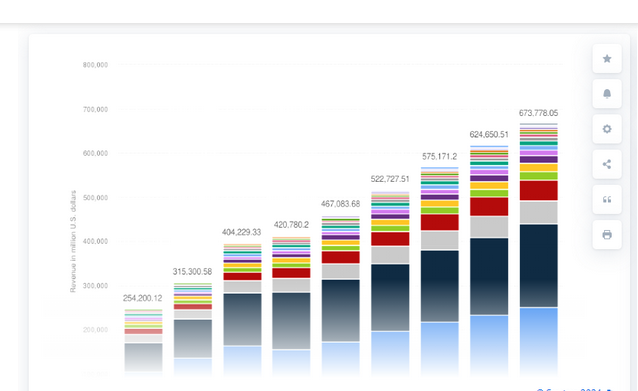
Best Mobile App Development Platforms in 2025
In a world where smartphones have become nearly as essential as wallets and house keys, mobile apps continue to dominate the digital landscape. Whether it's managing finances, booking a cab, attending a virtual doctor consultation, or playing a game, there’s an app for everything.
As we step deeper into 2025, mobile app development isn't just a trend; it's a cornerstone of how businesses connect with their customers and how users experience digital services.
The evolution of mobile app development has been nothing short of revolutionary. We’ve moved from basic apps offering simple functionality to immersive, AI-powered solutions that blur the lines between digital and physical realities. As such, businesses, regardless of their size or industry, must leverage cutting-edge app development platforms to stay relevant, deliver top-tier user experiences, and grow.
In this guide, we’ll dive into the best mobile app development platforms in 2025, evaluate their strengths and weaknesses, and help you decide which tool fits your goals best.
So whether you're a seasoned developer or a business owner partnering with a mobile app development company, this article has insights for you.
The blog explores the best mobile app development platforms of 2024, guiding developers and businesses through the latest tools and technologies for creating mobile applications. It discusses key platforms like Flutter, React Native, Xamarin, Swiftic, Appcelerator Titanium, and Ionic, highlighting their pros and cons. The article emphasizes the importance of choosing the right platform based on factors like target audience, development costs, app functionality, and maintenance needs. It also touches on future trends in the industry, such as the integration of AI and machine learning, and the rising popularity of AR and VR in app development.
Understanding Mobile App Development Platforms

Mobile app development platforms are comprehensive suites that provide developers with all the necessary tools and resources to create, test, and deploy mobile applications. These platforms are designed to streamline the development process by offering integrated development environments (IDEs), code libraries, APIs, and management tools that facilitate everything from the initial design to the final deployment. A key feature of these platforms is their ability to support various programming languages and frameworks, allowing developers to build applications for multiple operating systems, such as iOS and Android, from a single codebase.
Here are some core features commonly found in leading mobile app development platforms:
- Integrated Development Environments (IDEs): Provide code editors, debugging tools, and simulation environments to streamline the coding process.
- Pre-built Components: Ready-to-use UI elements and templates to speed up design and development.
- APIs for Faster Integration: Allow seamless connection to third-party services, payment gateways, databases, and cloud solutions.
- Multi-platform Deployment Support: Enables you to write code once and deploy across multiple operating systems like iOS and Android, ideal for cross-platform mobile app development.
- Backend Services: Offer cloud storage, authentication, real-time databases, and analytics to handle the server-side logic of your mobile apps.
Criteria for Choosing a Platform
When selecting a mobile app development platform, several key criteria must be considered to ensure the platform aligns with your project's needs and goals. Here’s a detailed look at these factors:
- Target Audience: The choice of platform can significantly depend on who your target users are. Understanding the geographic and demographic characteristics of your audience, such as their preferred mobile devices and operating systems, can guide you in choosing between platforms like iOS, Android, or perhaps a cross-platform solution that addresses a broader user base.
- Development Cost and Time: Budget and project timelines are critical considerations. Native platforms may require more investment in terms of time and money due to the need for developing separate versions for iOS and Android. Hybrid or cross-platform solutions, on the other hand, can reduce costs and development time by allowing developers to use a single codebase for both platforms.
- App Functionality and Performance: The complexity and required performance of your app can also dictate the choice of platform. Native development, while more resource-intensive, typically offers better performance and a more seamless user experience, especially for apps that require extensive interaction with device hardware or complex animations.
- Maintenance and Scalability: The ease of updating your app and scaling its features as your user base grows or as technology evolves is another crucial factor. Platforms that offer robust backend services and easy integration with emerging technologies can simplify the process of maintaining and scaling your app over time.
By carefully evaluating these criteria, you can choose a development platform that not only meets your immediate needs but also supports your long-term success in the ever-evolving landscape of mobile technology.
Top Mobile Application Development Platforms in 2024
1. Flutter
Flutter, developed by Google, continues to be a popular choice in 2024 due to its unique approach to creating natively compiled applications for mobile, web, and desktop from a single codebase. Its ‘write once, run anywhere’ philosophy, combined with a rich set of pre-designed widgets and its own rendering engine, provides a smooth UI experience that performs on par with native apps.
Pros:
- One codebase for multiple platforms
- Excellent UI with custom widgets
- Fast development with “hot reload”
Cons:
- App size can be larger
- Steep learning curve for newcomers
Best for: Startups, MVPs, and interactive UI-rich mobile apps
2. React Native
React Native allows developers to build mobile apps using JavaScript and React. This platform is ideal for developers looking to leverage web development skills to build mobile applications that feel truly native. React Native has a large community and supports both iOS and Android platforms, making it a versatile choice for cross-platform development.
Pros:
- Strong community
- Fast updates with live reloading
- Wide plugin ecosystem
Cons:
- May struggle with advanced animations
- Less optimized for heavy computing
Best for: Web developers moving into mobile app development, or companies needing rapid prototyping.
3. Swiftic
Swiftic is one of the most user-friendly mobile app development platforms, making it ideal for beginners and small businesses looking to create an app quickly without extensive coding knowledge. It offers an intuitive interface with a variety of templates and features like social media integration, push notifications, and more.
Pros:
- No coding skills required
- Cost-effective
- Fast deployment
Cons:
- Limited customization Not suitable for complex features
Best for: Small businesses and individuals creating basic mobile apps
4. Xamarin
Owned by Microsoft, Xamarin is a strong contender for developers looking to create apps with a near-native user experience. Xamarin uses C# for coding, allowing code to be shared across Windows, iOS, and Android platforms. It is particularly well-suited for applications that require heavy data processing or that need to leverage native API access.
Pros:
- Access to native APIs
- Strong corporate backing
- High code reusability
Cons:
- Larger app size
- Slower updates compared to newer platforms
Best for: Enterprise-grade mobile app development
5. Appcelerator Titanium
Appcelerator Titanium uses JavaScript to create native iOS and Android apps while allowing developers to reuse 60%-90% of the same code for all platforms, which significantly speeds up the development process. It also provides mobile backend as a service (MBaaS) features, analytics, and marketplace services.
Pros:
- Broad tech stack (Angular, Vue, React support)
- Pre-built UI elements
- Great for PWAs
Cons:
- Performance can lag for heavy apps
Best for:Web developers and teams building cross-platform or PWA-focused mobile apps
6. Ionic
Ionic is another leading choice for building hybrid mobile apps. It allows developers to use web technologies like HTML, CSS, and JavaScript. Ionic focuses on aesthetics, providing a plethora of themes and components that mimic native UI guidelines. With integration capabilities for Angular, React, and Vue.js, Ionic is versatile and feature-rich.
- Pros: Strong UI components, extensive plugin library, great for progressive web apps (PWAs).
- Cons: Hybrid apps can have performance issues compared to native apps.
Also Read: Empower Your Business: Choose the Right Custom Software Development Company
Future Trends in Mobile App Development
The mobile app development industry is experiencing a significant surge, fueled by an increase in app creation and a growing consumer base that relies heavily on mobile apps for everyday tasks. Mobile apps have rapidly become an essential part of our daily lives, a trend largely driven by the industry's continuous push to innovate and enhance features.

This rapid evolution in mobile app development is a response to advancing software technologies, rising customer expectations, and other influential factors shaping industry trends. Currently, mobile app development is at an all-time high, striving to cater to the intricate needs and preferences of end-users.
TTo underscore this growth, consider some compelling statistics: According to the Statista Digital Market Outlook, the mobile app industry's revenue is expected to soar to approximately 613 billion U.S. dollars by 2027. Additionally, the number of app downloads worldwide in 2024 is projected to reach a staggering 299 billion. These figures highlight the dynamic expansion and the critical role mobile apps play in the global digital economy.
Key Considerations for Selecting a Mobile App Development Platform
When choosing a mobile app development platform, it’s crucial to consider various factors that can influence the efficiency, effectiveness, and success of the app development process. Here are several key factors to keep in mind:
- Platform Compatibility: Determine whether you need to target iOS, Android, or both. Some platforms are better suited for cross-platform development, enabling you to reach a broader audience with a single codebase, while others are optimized for native app development specific to one ecosystem.
- Development Costs and Resources: Assess the total cost of development, which includes not only the initial development costs but also ongoing maintenance and updates. Consider the availability and cost of developers skilled in the platform’s specific languages and tools.
- User Experience (UX): The choice of platform can significantly impact the user experience. Native development platforms typically offer superior performance and a more seamless interaction with the device’s hardware, resulting in a more intuitive user interface.
- Technical Capabilities: Evaluate the technical features offered by the platform, such as support for offline functionality, multi-threading, and access to hardware features like GPS, camera, and sensors. These capabilities are crucial for leveraging the full potential of modern smartphones.
- Scalability: The platform should support scaling both the user base and the functionality of the app. It should handle increased loads and interactions smoothly as your app grows in popularity.
- Security Features: Given the sensitive nature of data handled by mobile apps, strong security features are essential. The platform should offer robust security protocols to protect user data and prevent breaches.
- Developer Community and Support: A strong, active developer community and good support from the platform provider can be invaluable, especially when encountering bugs or seeking to implement advanced features. Check for forums, documentation, tutorials, and customer service support.
- Integration Capabilities: Consider how well the platform integrates with other tools and services, such as third-party APIs, cloud services, and backend databases. Seamless integration is crucial for modern apps that need to interact with numerous systems and services.
- Market Trends: Keep abreast of the latest trends and technologies in mobile app development. The platform should be up-to-date with these trends to ensure that your app does not become obsolete shortly after its release.
- Speed to Market: Some platforms allow for quicker deployment of apps than others. If getting to market swiftly is a priority, consider platforms that offer rapid development features, pre-built components, and automation tools.
Conclusion
In 2025, the path to successful mobile app development lies in aligning your business goals with the right technology. Whether you're building a data-heavy enterprise solution or a sleek social app, the tools you choose will determine performance, scalability, and user satisfaction.
From initial ideation and thorough market research to the detailed processes of design, development, and deployment, each step plays a crucial role in transforming a conceptual app into a functional and successful market offering. As technology continues to advance, developers and businesses must stay agile, adapting to new tools, trends, and consumer expectations. By following this comprehensive guide, you can ensure that your mobile app not only meets the desired objectives but also stands out in a competitive environment, delivering value to users and driving business growth. Whether you are a seasoned developer or a budding entrepreneur, the journey of mobile app development is a rewarding venture in the digital age.
Launch your vision with our mobile app development company, where innovation meets excellence to create cutting-edge mobile solutions.





